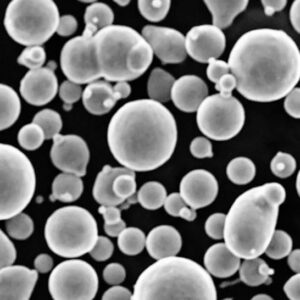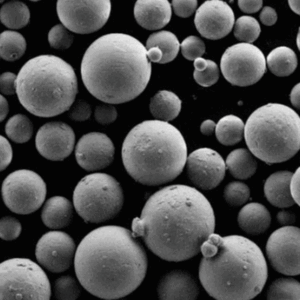Low-alloy steels powder is a vital material in modern manufacturing, offering a blend of versatility and strength that makes it a preferred choice for a wide range of applications. From automotive parts to heavy machinery, low-alloy steel powders play a crucial role in producing durable and efficient products. In this comprehensive guide, we will delve into the world of low-alloy steels powder, exploring its composition, characteristics, applications, specifications, and more.
Overview of Low-Alloy Steels Powder
Low-alloy steels are steel alloys that contain a small percentage of alloying elements (typically less than 5%) to improve their mechanical properties. These powders are used in various industries due to their excellent strength, toughness, and resistance to wear and corrosion.
Key Details:
- Definition: Steel alloys with a small percentage of additional elements.
- Primary Use: Manufacturing of durable and efficient components.
- Benefits: Enhanced mechanical properties, corrosion resistance, and cost-effectiveness.

Composition of Low-Alloy Steels Powder
The composition of low-alloy steels powder can vary depending on the specific type and application. However, common alloying elements include chromium, nickel, molybdenum, vanadium, and manganese. These elements enhance the steel’s properties, such as strength, toughness, and corrosion resistance.
| Alloying Element | Purpose | Typical Percentage |
|---|---|---|
| Chromium | Improves hardness and corrosion resistance | 0.5% – 2.0% |
| Nickel | Increases toughness and impact resistance | 1.0% – 3.5% |
| Molybdenum | Enhances strength and heat resistance | 0.2% – 1.0% |
| Vanadium | Increases strength and wear resistance | 0.1% – 0.3% |
| Manganese | Improves hardenability and toughness | 0.3% – 1.5% |
Characteristics of Low-Alloy Steels Powder
Low-alloy steels powder exhibits several key characteristics that make it ideal for various applications. These include:
- High Strength: The addition of alloying elements significantly enhances the strength of the steel.
- Toughness: Low-alloy steels can absorb substantial energy before fracturing.
- Wear Resistance: Alloying elements like chromium and vanadium improve wear resistance.
- Corrosion Resistance: Elements like chromium and nickel help protect against corrosion.
- Heat Resistance: Molybdenum and other elements provide resistance to high temperatures.
Applications of Low-Alloy Steels Powder
Low-alloy steels powder is used in a multitude of industries due to its versatile properties. Here are some common applications:
| Application | Description |
|---|---|
| Automotive | Engine components, gears, and transmission parts |
| Aerospace | Structural components, landing gear, and engine parts |
| Construction | Structural beams, reinforcing bars, and fasteners |
| Oil & Gas | Drill bits, pipelines, and fittings |
| Heavy Machinery | Gears, shafts, and bearings |
| Military | Armor plating, weaponry, and military vehicles |
Specifications, Sizes, Grades, and Standards
When selecting low-alloy steels powder, it’s essential to consider the specifications, sizes, grades, and standards to ensure the material meets the requirements of your specific application.
| Specification | Description |
|---|---|
| ASTM A829 | Standard Specification for Alloy Structural Steel |
| AMS 6359 | Aerospace Material Specification for Alloy Steels |
| ISO 683-2 | International Standard for Heat-Treated Steels |
| Size Range | Particle sizes ranging from 5 µm to 150 µm |
| Grades | 4130, 4140, 4340, 8620, among others |
Suppliers and Pricing Details
Several suppliers offer low-alloy steels powder, each providing different grades and pricing based on the quantity and specifications required.
| Supplier | Grade | Price per kg | MOQ |
|---|---|---|---|
| ABC Metals | 4140 | $20 | 50 kg |
| XYZ Alloys | 4340 | $22 | 100 kg |
| Global Steel Inc. | 8620 | $18 | 75 kg |
| Metals & Co. | 4130 | $19 | 60 kg |
| Allied Powders | Custom Mix | $25 | 50 kg |
Comparing Pros and Cons
Choosing the right low-alloy steel powder involves weighing the pros and cons of each type based on the application requirements.
| Type | Pros | Cons |
|---|---|---|
| 4130 | High strength, good weldability | Moderate corrosion resistance |
| 4140 | Excellent toughness, wear resistance | More expensive than 4130 |
| 4340 | Superior strength, high toughness | Difficult to machine |
| 8620 | Good hardenability, easy to machine | Lower tensile strength |
Types of Low-Alloy Steels Powder
Here’s a detailed look at specific models of low-alloy steel powders:
- 4130 Steel Powder
- Composition: Chromium, Molybdenum
- Properties: High strength, good weldability, moderate corrosion resistance
- Applications: Aircraft tubing, auto racing parts
- 4140 Steel Powder
- Composition: Chromium, Molybdenum
- Properties: Excellent toughness, wear resistance, higher hardness
- Applications: Gears, shafts, axles
- 4340 Steel Powder
- Composition: Nickel, Chromium, Molybdenum
- Properties: Superior strength, high toughness, fatigue resistance
- Applications: Aircraft landing gear, high-strength parts
- 8620 Steel Powder
- Composition: Nickel, Chromium, Molybdenum
- Properties: Good hardenability, easy to machine, carburizing grade
- Applications: Gears, crankshafts, fasteners
- 9310 Steel Powder
- Composition: Nickel, Chromium, Molybdenum
- Properties: High hardenability, excellent toughness
- Applications: Heavy-duty gears, high-strength components
- 5160 Steel Powder
- Composition: Chromium
- Properties: Good fatigue resistance, toughness, high hardness
- Applications: Leaf springs, cutting tools
- 6150 Steel Powder
- Composition: Chromium, Vanadium
- Properties: High strength, good hardness, wear resistance
- Applications: Axles, shafts, gears
- 50BV30 Steel Powder
- Composition: Chromium, Vanadium, Boron
- Properties: Excellent toughness, high wear resistance
- Applications: Springs, torsion bars
- 17CrNiMo6 Steel Powder
- Composition: Chromium, Nickel, Molybdenum
- Properties: High core strength, excellent hardenability
- Applications: Gear wheels, camshafts
- EN36A Steel Powder
- Composition: Nickel, Chromium
- Properties: High strength, toughness, good core properties
- Applications: Gears, heavy-duty parts

Advantages and Limitations
Understanding the advantages and limitations of low-alloy steels powder can help in making informed decisions.
Advantages:
- Enhanced Mechanical Properties: Improved strength, toughness, and wear resistance.
- Cost-Effective: Generally less expensive than high-alloy steels.
- Versatile Applications: Suitable for a wide range of industries.
Limitations:
- Corrosion Resistance: Generally lower than high-alloy steels.
- Machinability: Some grades can be challenging to machine.
- Heat Treatment Requirements: Often requires precise heat treatment processes.
FAQ
| Question | Answer |
|---|---|
| What are low-alloy steels? | Low-alloy steels are steel alloys with a small percentage of alloying elements to improve their properties. |
| What are the benefits of using low-alloy steels powder? | They offer enhanced strength, toughness, wear resistance, and cost-effectiveness. |
| What are common applications of low-alloy steels powder? | Automotive parts, aerospace components, construction materials, and more. |
| How do alloying elements improve low-alloy steels? | Elements like chromium, nickel, and molybdenum enhance strength, toughness, and corrosion resistance. |
| What are some popular grades of low-alloy steels powder? | 4130, 4140, 4340, 8620, among others. |














